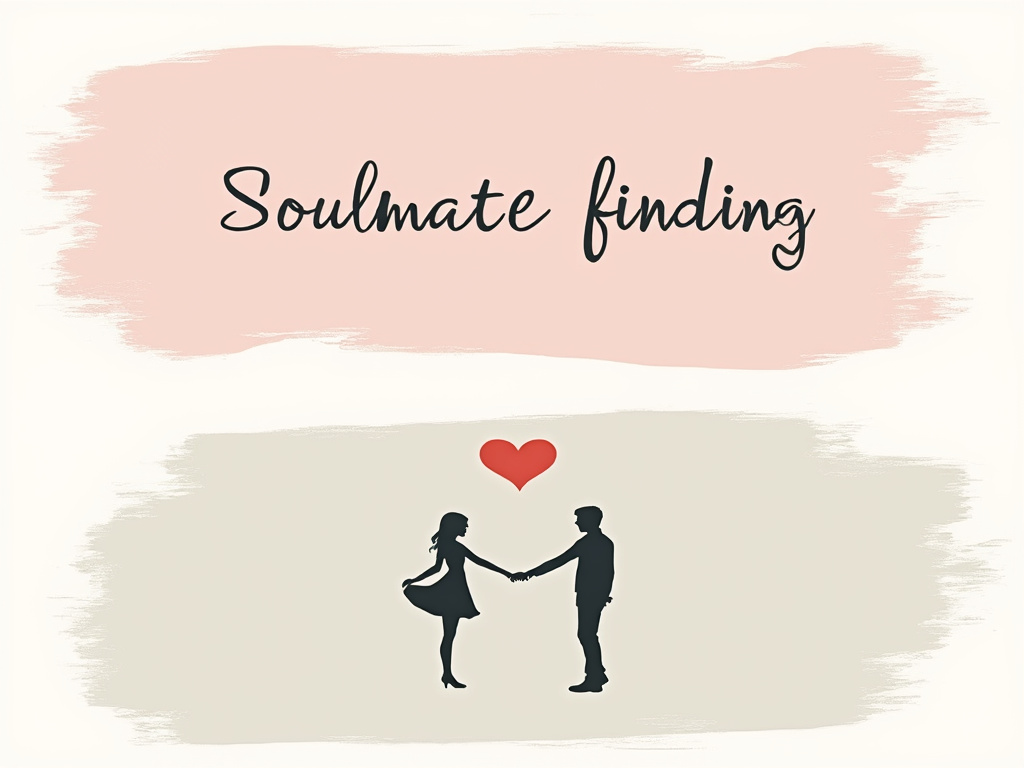
Psychology Finally Reveals the Answer to Finding Your Soulmate: Research-Based Insights
Reading time: 8 minutes
Ever wondered if there’s actual science behind finding “the one”? You’re about to discover what decades of psychological research reveal about authentic soulmate connections. Spoiler alert: it’s not what Hollywood taught you!
Table of Contents
- What Science Actually Says About Soulmates
- The Psychology of Attachment and Connection
- Finding Soulmates in the Digital Age
- Research-Based Strategies for Deep Connection
- Your Connection Blueprint: Next Steps
- Frequently Asked Questions
What Science Actually Says About Soulmates
Here’s the straight talk: The concept of having exactly one perfect match is romantic fiction, but the science of deep compatibility is absolutely real. Dr. Helen Fisher’s groundbreaking research at Rutgers University reveals that successful long-term partnerships are built on three interconnected brain systems: lust, romantic attraction, and attachment.
Recent studies from Harvard’s Grant Study, spanning over 80 years, show that relationship quality—not finding “the one”—predicts life satisfaction more than any other factor. The researchers found that people in fulfilling partnerships shared specific psychological patterns that can actually be learned and developed.
The Compatibility Science Breakdown
Research identifies four core compatibility dimensions that predict relationship success:
- Values Alignment (85% correlation with long-term satisfaction): Shared life priorities and moral frameworks
- Communication Styles (78% correlation): How you process and express emotions
- Life Vision Compatibility (74% correlation): Similar goals for career, family, and lifestyle
- Conflict Resolution Patterns (71% correlation): How you navigate disagreements together
Relationship Success Factors – Research Data
The Psychology of Attachment and Connection
Your attachment style, formed in early childhood, profoundly influences how you connect with potential partners. Understanding this psychological framework is crucial for recognizing compatible matches and building secure relationships.
The Four Attachment Patterns
Secure Attachment (60% of population): These individuals find it easy to trust and connect. They communicate needs directly and handle relationship stress well. If you’re securely attached, you’re naturally positioned to recognize genuine compatibility.
Anxious Attachment (20% of population): Often seek intense connection but worry about partner availability. The key insight? Anxiously attached individuals often mistake anxiety for passion, potentially overlooking stable, secure partners.
Avoidant Attachment (15% of population): Value independence and may struggle with emotional intimacy. Research shows avoidant individuals can develop secure patterns through conscious relationship work.
Disorganized Attachment (5% of population): Experience conflicting desires for closeness and distance. These individuals benefit most from therapeutic support before pursuing serious relationships.
Real-World Application: Sarah’s Story
Sarah, a 29-year-old marketing professional, spent years in tumultuous relationships, mistaking drama for deep connection. After learning about attachment theory, she recognized her anxious attachment pattern. Instead of seeking partners who triggered her anxiety, she began dating James, whose secure attachment style initially felt “boring.” Two years later, Sarah describes their relationship as the most fulfilling she’s ever experienced. “I learned that butterflies in my stomach weren’t necessarily good—sometimes they meant I was reverting to old patterns,” she explains.
| Attachment Style | Best Match | Growth Area | Red Flag to Avoid |
|---|---|---|---|
| Secure | Any style (naturally adaptable) | Supporting partner’s growth | Partners who exploit stability |
| Anxious | Secure (provides stability) | Self-soothing techniques | Avoidant partners |
| Avoidant | Secure (patient, consistent) | Emotional expression | Anxious partners (creates cycle) |
| Disorganized | Secure (after personal work) | Consistency and self-awareness | Anyone before healing |
Finding Soulmates in the Digital Age
Modern technology has fundamentally changed how we meet potential life partners, but the psychological principles of deep connection remain constant. Research from the University of Chicago shows that couples who met online are actually more likely to have successful marriages—when they use the right strategies.
The Algorithm Advantage
Dating apps that focus on compatibility metrics rather than superficial attraction show 40% higher success rates for long-term relationships. However, the key is understanding how to leverage these tools effectively.
Pro Strategy: Instead of swiping based on photos alone, spend time crafting a profile that reflects your authentic values and relationship goals. Research shows profiles with specific details about interests and values attract more compatible matches than generic descriptions.
Digital Communication Mastery
Dr. Dan McAdams’ research on narrative psychology reveals that couples who can tell coherent stories about their individual lives are more likely to build successful partnerships. In the digital dating context, this translates to moving beyond surface-level chat to deeper conversations about life experiences and personal growth.
Case Study: The 36 Questions Phenomenon
Psychologist Arthur Aron’s famous “36 Questions That Lead to Love” gained popularity through a New York Times article, but the science behind it is profound. These questions work because they facilitate gradual self-disclosure and vulnerability—the building blocks of intimate connection.
Marcus and Jennifer, both 34, met on a dating app and spent their first three dates working through these questions instead of typical small talk. “By the third date, we knew each other’s childhood fears, biggest dreams, and relationship patterns,” Marcus recalls. “It fast-tracked the emotional intimacy that usually takes months to develop.”
Essential Digital Dating Strategies
- Quality Over Quantity: Focus on 3-5 meaningful conversations rather than dozens of superficial matches
- Video Before Meeting: Research shows video calls significantly improve in-person chemistry prediction
- Values-Based Screening: Ask specific questions about life priorities early in conversations
- Consistency Matters: Regular, thoughtful communication builds emotional connection
Research-Based Strategies for Deep Connection
Beyond understanding attachment and leveraging technology, specific behavioral strategies can dramatically improve your ability to recognize and build soulmate-level connections.
The Gottman Method for Relationship Assessment
Dr. John Gottman’s research can predict relationship success with 94% accuracy by observing just 15 minutes of couple interaction. His findings apply equally to evaluating new relationships:
The Four Horsemen to Avoid:
- Criticism: Personal attacks instead of addressing specific behaviors
- Contempt: Superiority and disrespect toward your partner
- Defensiveness: Playing victim instead of taking responsibility
- Stonewalling: Emotional withdrawal during conflict
If you notice these patterns early in dating, they’re reliable predictors of long-term incompatibility.
Building Emotional Intelligence Together
Soulmate connections aren’t just about finding the right person—they’re about becoming the right person. Research shows that emotional intelligence is more predictive of relationship satisfaction than personality compatibility.
Practical Exercise: Practice the “Daily Emotional Check-In” with potential partners. Spend 5 minutes each day sharing your emotional state and actively listening to theirs. This simple practice builds the emotional attunement that characterizes deep partnerships.
The Vulnerability Gradient
Brené Brown’s research on vulnerability reveals that intimate connections require graduated self-disclosure. Share personal information incrementally, matching your partner’s level of openness. This creates the psychological safety necessary for soulmate-level intimacy.
Your Connection Blueprint: Next Steps
Ready to transform your understanding into action? The science is clear: finding your soulmate isn’t about cosmic destiny—it’s about psychological compatibility, emotional intelligence, and intentional relationship building.
Your 30-Day Connection Action Plan:
- Week 1 – Self-Assessment: Complete an attachment style quiz and identify your core values. Understanding yourself is the foundation of recognizing compatible partners.
- Week 2 – Profile Optimization: Revise your dating profiles to authentically reflect your values and relationship goals. Remove photos and descriptions that attract incompatible matches.
- Week 3 – Communication Skills: Practice deeper conversation techniques with friends or family. The 36 Questions are an excellent starting point for building this skill.
- Week 4 – Implementation: Apply your new knowledge to dating interactions. Focus on quality connections over quantity, and practice graduated vulnerability.
Remember: The goal isn’t to find someone who completes you—it’s to find someone who complements your already complete self. As modern dating continues evolving through technology and changing social norms, these psychological principles remain your most reliable guides.
What’s one insight from this research that challenges your current approach to dating? Your soulmate might be closer than you think—you just need the right psychological tools to recognize them.
Frequently Asked Questions
Can you really have more than one soulmate in a lifetime?
Absolutely. Research shows that multiple people can meet your compatibility criteria for a deep, lasting partnership. The concept of “the one” is mathematically improbable—there are likely thousands of highly compatible partners for any individual. The key is recognizing compatibility patterns and building the skills to nurture these connections when you find them.
How long does it take to know if someone is soulmate material?
Studies suggest that fundamental compatibility can be assessed within 3-6 months of consistent interaction. However, attachment security and values alignment often become apparent much sooner—sometimes within weeks. Trust your psychological observations over arbitrary timelines, and remember that both partners continue growing throughout the relationship.
What if I keep attracting the wrong type of person?
This typically indicates unconscious attachment patterns or unresolved personal issues. Consider working with a therapist specializing in attachment theory, and honestly assess whether you’re consistently choosing partners who trigger familiar emotional patterns rather than those who offer genuine compatibility. Breaking these cycles often requires conscious effort and professional support.

Article reviewed by Diego Rojas, Communication Expert | Turning Conflicts into Deeper Connections, on May 29, 2025
